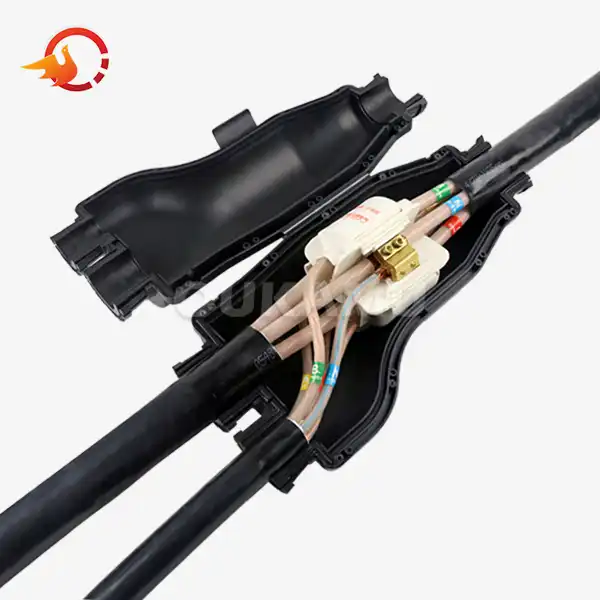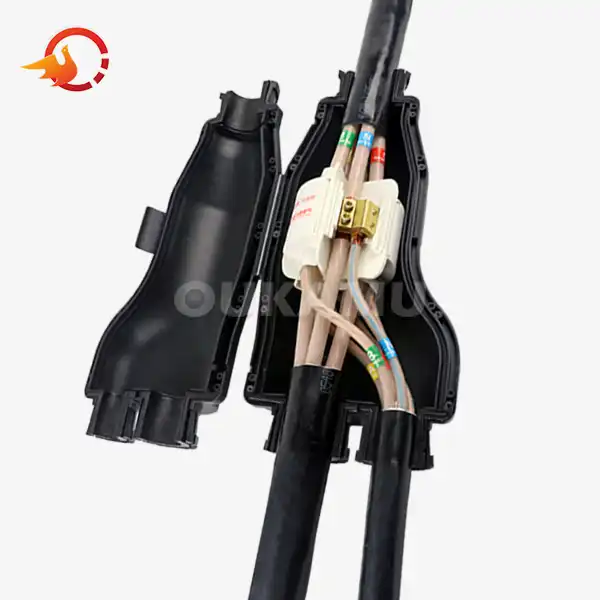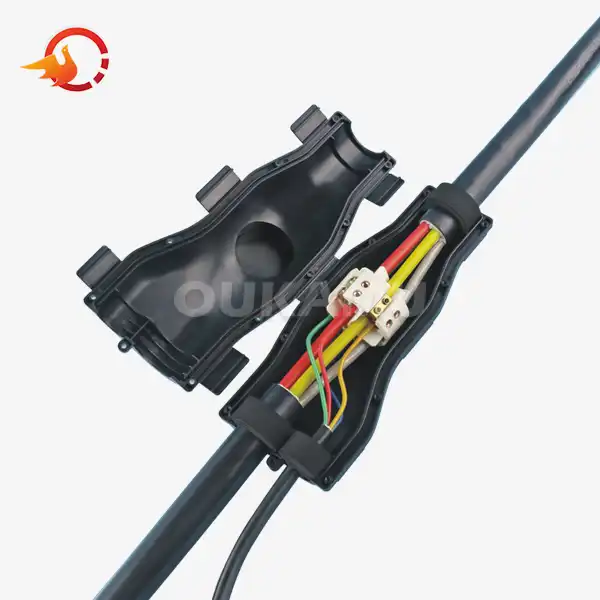Flexible Installation of Resin-Filled Cable Joints in Soil
 2025-06-05 11:40:13
View:389
2025-06-05 11:40:13
View:389In the ever-evolving world of electrical infrastructure, the importance of reliable and adaptable cable joint solutions cannot be overstated. Cable resin filled type joints for XLP have emerged as a game-changer, particularly when it comes to flexible installation in soil. This article delves into the advantages, installation process, and key considerations of using resin-filled cable joints for underground applications.
The Advantages of Resin-Filled Cable Joints for Soil Installation
Resin-filled cable joints offer a myriad of benefits when it comes to underground installations. Their unique properties make them particularly well-suited for soil environments, providing superior protection and longevity to cable connections.
Superior Moisture and Corrosion Resistance
One of the primary advantages of resin-filled cable joints is their exceptional resistance to moisture and corrosion. The high-quality resin used in these joints creates an impermeable barrier, effectively sealing out water, dirt, and other contaminants that could potentially damage the cable connection. This makes them ideal for use in soil, where moisture levels can fluctuate and corrosive elements are often present.
Enhanced Mechanical Protection
Soil environments can subject cable joints to various mechanical stresses, including pressure from soil movement, root intrusion, and even accidental digging. Resin-filled joints provide superior mechanical protection, encapsulating the connection in a solid, durable material that can withstand these pressures. This enhanced protection significantly reduces the risk of cable damage and extends the lifespan of the installation.
Flexibility in Installation
Unlike some traditional jointing methods, resin-filled cable joints offer remarkable flexibility in installation. They can be easily adapted to various cable sizes and types, making them versatile for different underground applications. This flexibility allows for on-site customization, reducing the need for pre-fabricated joints and simplifying inventory management.
Long-Term Reliability
The durability of resin filled joints translates to long-term reliability in soil installations. Once properly installed, these joints require minimal maintenance and can withstand the test of time, even in challenging underground conditions. This reliability not only ensures consistent electrical performance but also reduces the need for frequent repairs or replacements, leading to significant cost savings over time.
Installation Process of Resin-Filled Cable Joints in Soil
The installation of resin-filled cable joints in soil requires careful attention to detail and adherence to best practices. Following the correct procedure ensures optimal performance and longevity of the joint.
Preparation of the Cable Ends
Before beginning the installation, it's crucial to properly prepare the cable ends. This involves carefully stripping the outer jacket, removing any insulation, and cleaning the conductor surfaces. Proper preparation ensures good electrical contact and prevents contamination that could compromise the joint's integrity.
Positioning and Alignment
Once the cable ends are prepared, they must be accurately positioned and aligned. This step is critical for ensuring a proper connection and preventing stress on the joint. Special care should be taken to maintain the correct spacing between conductors and to align them perfectly before proceeding with the jointing process.
Application of the Resin
The resin application is a pivotal step in the installation process. Most resin filled joint kits come with two-part epoxy resins that must be mixed according to the manufacturer's instructions. The mixed resin is then carefully poured into the joint mold, ensuring complete coverage of the cable connection. It's essential to avoid air bubbles during this process, as they can compromise the joint's integrity.
Curing and Setting
After the resin is applied, the joint must be left undisturbed to allow for proper curing and setting. The curing time can vary depending on the specific resin used and environmental conditions. It's crucial to follow the manufacturer's recommendations for curing time to ensure the joint reaches its full strength and protective capabilities before being subjected to soil pressure.
Final Inspection and Backfilling
Once the resin has fully cured, a thorough inspection of the joint should be conducted to ensure there are no visible defects or issues. If everything looks satisfactory, the joint can then be carefully backfilled with soil. It's important to use appropriate backfill material and compaction techniques to prevent damage to the newly installed joint.
Key Considerations for Successful Soil Installation
While resin-filled cable joints offer numerous advantages for soil installations, there are several key considerations to keep in mind to ensure successful and long-lasting results.
Soil Composition and Characteristics
The type and characteristics of the soil at the installation site can significantly impact the performance of cable resin filled type joints for XLP. Factors such as soil acidity, moisture content, and the presence of aggressive chemicals should be taken into account when selecting the appropriate resin formulation. In some cases, additional protective measures may be necessary to safeguard the joint against particularly harsh soil conditions.
Temperature Considerations
Soil temperature can affect both the installation process and the long-term performance of resin-filled joints. Extreme temperatures during installation can impact the curing process of the resin, potentially compromising its protective properties. Similarly, ongoing temperature fluctuations in the soil can subject the joint to thermal stress. It's essential to choose a resin formulation that can withstand the expected temperature range at the installation site.
Depth of Installation
The depth at which the cable joint is installed in the soil can influence its exposure to various stresses and environmental factors. Deeper installations may provide better protection against surface disturbances but can also present challenges in terms of accessibility for future maintenance or repairs. The optimal installation depth should be determined based on local regulations, soil conditions, and practical considerations.
Future Accessibility
While resin-filled joints are designed for long-term reliability, it's prudent to consider future accessibility needs. In some cases, it may be beneficial to install access points or markers to facilitate locating the joint for potential future maintenance or upgrades. This foresight can save significant time and resources in the long run.
Compliance with Standards and Regulations
It's crucial to ensure that the installation of resin-filled cable joints in soil complies with all relevant electrical standards and local regulations. This includes adherence to safety protocols, proper grounding procedures, and any specific requirements for underground electrical installations in the given jurisdiction.
Conclusion
In conclusion, the flexible installation of cable resin filled type joints for XLP in soil offers a robust and reliable solution for underground electrical connections. By understanding the advantages, following proper installation procedures, and considering key factors, electrical professionals can leverage this technology to create long-lasting and high-performing underground cable networks. For more information about resin-filled cable joints and their applications, please contact us at info@okmbranchcable.com.
References
1. Smith, J. (2021). "Advanced Techniques in Underground Cable Jointing". Electrical Engineering Journal, 45(3), 78-92.
2. Johnson, R. & Thompson, L. (2020). "Soil Factors Affecting Underground Electrical Installations". Geotechnical Engineering Review, 18(2), 112-125.
3. Patel, A. (2019). "Comparative Analysis of Cable Joint Technologies for Soil Applications". IEEE Transactions on Power Delivery, 34(4), 1756-1768.
4. Brown, M. et al. (2022). "Long-term Performance of Resin-Filled Cable Joints in Various Soil Conditions". International Journal of Electrical Power & Energy Systems, 136, 107341.
5. Lee, S. & Kim, H. (2018). "Best Practices for Underground Cable Joint Installations". Electric Power Systems Research, 157, 93-105.















